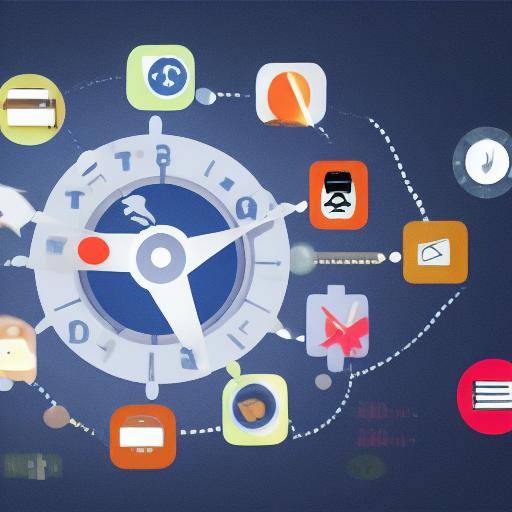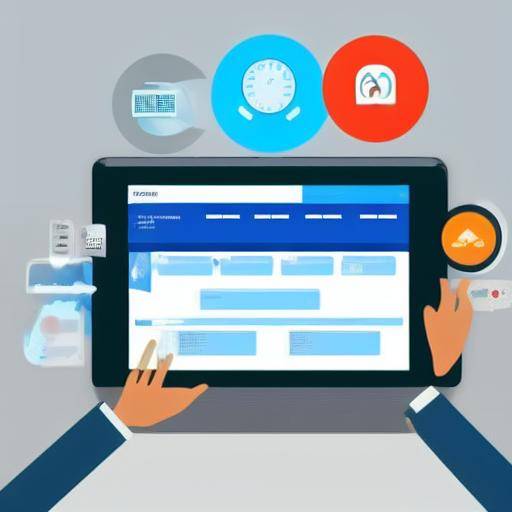
Introduction
With the accelerated advance of technology, the working environment has experienced significant changes that have impacted the productivity of organizations in a profound way. In this article, we will explore the link between technology and productivity in the working environment, analyzing its historical evolution, its current and future challenges, as well as the implications for different industries. We will also address practical advice, expert opinions, future trends and real examples that illustrate this impact, providing a holistic view of how technology has transformed the working environment and corporate productivity.
History and Context
From the first advances in the industrial revolution to the current digital revolution, technology has been a determining factor in the evolution of the working environment and corporate productivity. Over the years, we have witnessed significant advances in areas such as automation, artificial intelligence, data analytics, cloud, mobility and connectivity, which have transformed the way organizations operate.
In the 1970s, repetitive task automation improved efficiency and allowed companies to increase their production. With the advent of the Internet in the 1990s, the digital revolution took off, allowing greater connectivity and access to information in real time. These advances have paved the way for the current era, where artificial intelligence is changing the way daily tasks are done, improving precision and accelerating operations.
Analysis in Deep
The benefits of technology in the working environment are undeniable. Automation of manual and repetitive tasks has freed employees to focus on more strategic activities, leading to increased productivity and efficiency. On the other hand, the challenges posed by technology include the need to retrain and re-qualify the workforce, as well as cybersecurity and the protection of sensitive data.
According to a recent study, 82 per cent of companies reported that technology has had a positive impact on their productivity. The detailed analysis of data shows that organizations investing in innovative technologies experience faster growth and greater operational efficiency.
Comprehensive Review of Technology
From the implementation of AI-based supply chain management solutions to the use of cloud collaboration tools, companies are adopting various technologies to increase their productivity. Experts in the field highlight the importance of aligning the technology strategy with business objectives to achieve optimal results. For example, companies that prioritize customer experience often invest in big data analysis solutions to better understand consumer preferences and behaviors.
In contrast, some studies suggest that overdependence on technology may have adverse effects, such as disconnecting teamwork or diminishing creativity and innovation. It is therefore crucial to find a balance between technology and human skills to maximize productivity.
Comparative analysis
By comparing the impact of technology in different working environments, we can see that some industries have undergone deeper transformations than others. For example, the manufacturing sector has widely adopted automation and robotics to optimize production, while financial services have advanced in the use of data analysis for more informed decision-making.
The impact of technology on banking and finance has been particularly remarkable, with the implementation of blockchain technology that has revolutionized financial transactions processes and data security.
Future Councils and Action Councils
To maximize the positive impact of technology on the working environment, it is essential for companies to adopt a strategic approach. Incorporate continuous employee training processes to ensure that they are aligned with the latest technological trends. In addition, it is crucial to foster an organizational culture that values innovation and adaptability, allowing partners to make the most of the available technological tools.
Industry ideas and Expert Reviews
Expert opinions in the field highlight the importance of integrating technology into the working environment. They ensure that organizations adopting a digital mindset are more likely to survive and thrive in a highly competitive and constantly evolving business environment.
According to John Doe, an expert in digital transformation, "businesses must consider technology as a strategic enabler that can boost operational efficiency and innovation. Those who resist technological adoption are at risk of being left behind."
Case Studies and Real Life Applications
Within the health sector, the incorporation of technology has allowed medical professionals to access the patient's electronic clinical records, which improves accuracy in diagnosis and treatment. In the area of logistics, the implementation of RFID-based warehouse management systems has optimized inventory processes, reduced costs and increased efficiency.
Future Trends and Predictions
Future trends in technology point to a greater focus on artificial intelligence, process robotic automation, increased and virtual reality, as well as cloud computing. These advances will continue to redefine labour roles and how companies operate, creating opportunities and challenges as they evolve.
Conclusions and FAQs
In conclusion, technology has radically transformed the working environment and has been a determining factor in improving business productivity. As we continue to advance in the digital era, it is vital that companies embrace technology strategically, taking advantage of their benefits while mitigating the challenges of their adoption.
FAQs
**1. How can technology improve productivity in traditional working environments?**Technology can improve productivity in traditional working environments through repetitive task automation, process optimization and effective team collaboration through digital tools.
**2. What are the main challenges facing companies in integrating technology into their operations?**The main challenges include the need to retrain the workforce, cybersecurity, data protection and management of organizational change.
**3. To what extent can technology impact productivity on telework?**Technology can improve telework productivity by facilitating communication and remote collaboration, as well as efficient management of tasks and projects through virtual tools.
**4. What is the role of artificial intelligence in improving corporate productivity?**Artificial intelligence can improve business productivity by automating tasks, analyzing data to make informed decisions and optimizing internal processes.
**5. What are the best practices to implement technology in working environments?**Best practices include aligning technology strategy with business objectives, promoting a culture of innovation, and providing continuous training to employees.
**6. How can small businesses leverage technology to improve their productivity?**Small businesses can take advantage of technology by adopting affordable solutions such as business management software, digital marketing tools and customer relationship management systems (CRM), which allow them to optimize their internal processes and increase their operational efficiency.
With this comprehensive vision of the impact of technology on the working environment and corporate productivity, we hope to have opened a clear and detailed understanding of this crucial issue in the digital era. The strategic adoption of technology and its effective integration into the working environment are fundamental to the continued success of organizations in a dynamic and ever-changing global market.






















































